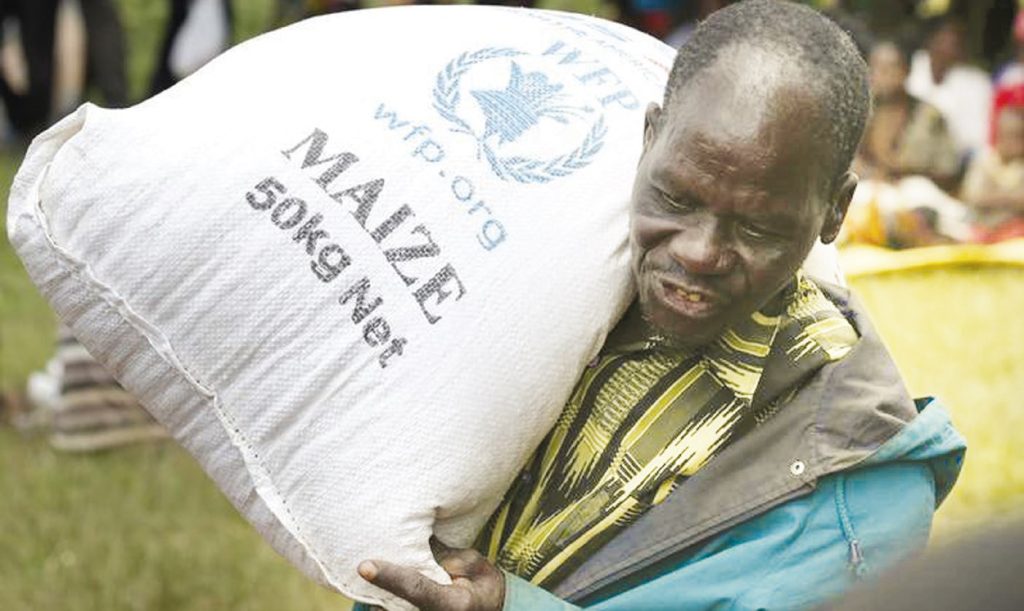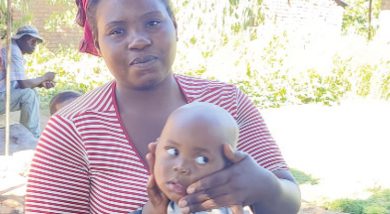Maize stuck in Tanzania
Malawi’s efforts to fill the maize deficit have suffered a blow as an import ban over the maize lethal necrosis (MLN) disease has left about 30 000 metric tonnes (MT) destined for Malawi stuck in Tanzania.
But in an interview on Thursday, Minister of Agriculture Sam Kawale, while confirming the development, said they have been assured by the World Food Programme (WFP) that the delay is due to a new arrangement to subject maize imported from Tanzania to tests to ascertain if it is consumable.

MLN poses a severe threat to maize production as plants with the disease are often barren and the ears formed are small with no or a few deformed seeds, thereby lowering the yield drastically.
Kawale the ministry has been working with financiers the World Bank, WFP, Department of Disaster Management Affairs (Dodma) and other relevant offices to facilitate the delivery of the 30 000MT of maize into Malawi.
He said: “The first batch of 10 000MT is expected to arrive during the first week of January with the rest arriving soon after that. The Ministry of Agriculture is aware of the ban on importation of maize from Tanzania [and Kenya].
“However, we have been assured by WFP that they have experts who are testing all the maize coming from Tanzania into Malawi, to make sure it is free of the disease.”

Kawale said they were confident with the steps taken by WFP to ensure that no harm is done in Malawi due to this maize.
He said: “WFP is very good at making sure that all food is fit for human consumption and does not pose risks to disease transmissions. The Ministry is grateful to World Bank for this assistance.”
WFP Malawi deputy country director Simon Denhere, in a written response to a questionnaire on Thursday, confirmed that the agency was supporting the Government of Malawi, through World Bank resources, to import maize for the ongoing Lean Season Food Insecurity Response.
He said: “WFP intends to import the maize from Tanzania and internal processes are being finalised for dispatches to commence. Arrivals planned from January 2024.
“WFP is coordinating closely with the Ministry of Agriculture on the import of the maize for the lean season response. WFP will be testing the commodities for [the disease] before the maize departs Tanzania for Malawi.”
In a separate interview, Dodma spokesperson Chipiliro Khamula said they started the distribution exercise in October this year, targeting 4.4 million people and that the exercise will run up to March next year.
He said the food assistance is provided in two modalities, namely in kind maize where households get a 50 kilogramme (kg) bag per month for three months while others get K50 000 on a monthly basis.
Said Khamula: “Provision of food assistance rolled out in councils with a six-month deficit in October. These include Machinga, Mulanje, Mangochi, Zomba, Thyolo, Blantyre, Phalombe, Mwanza, Neno, Ntcheu and Nkhotakota.
“The October maize distribution was being finalised in councils. There have been delays in relief food distribution.”
He said provision of food assistance for councils with five and four months deficits has only started in Nsanje, with the rest of the districts expected to start getting the relief maize this week.
Last week, the Strategic Grain Reserves (SGR) Committee meeting gave Dodma 20 000 MT from SGRs. In October, Dodma was also given 23000MT for the relief exercise.
According to Malawi Vulnerability Assessment Committee (Mvac), out of the 2023/24 food-insecure people, 470 000 are from the four cities of Mzuzu, Lilongwe, Blantyre and Zomba while 3.9 million are in rural areas nationwide.
The number of affected people in rural areas has increased by 23 percent from 3.1 million in the 2022/23 consumption year while urban areas have registered a decline by 25 percent from 627 571 people.






One Comment